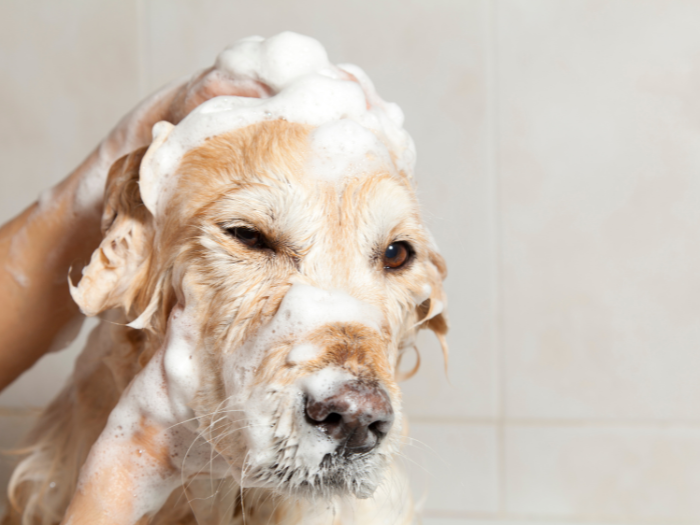
Introduction to Dog Bathing
Bathing is an essential part of maintaining your dog’s hygiene and overall health. In this guide, we will delve into the proper techniques and steps to ensure a successful and stress-free bathing experience for both you and your dog.
Benefits of Regular Dog Bathing
Regular bathing offers numerous benefits for your dog’s well-being, including:
- Cleanliness: Bathing removes dirt, debris, and odors, leaving your dog clean and fresh-smelling.
- Skin and Coat Health: Proper bathing helps remove excess oils, dead skin cells, and allergens, promoting a healthy skin and coat.
- Parasite Control: Bathing with appropriate products helps control fleas, ticks, and other external parasites that can cause discomfort and health issues.
- Bonding Time: Bathing provides an opportunity to bond with your dog and strengthen your relationship through trust and positive reinforcement.
Preparing for the Bath
Before bathing your dog, follow these preparation steps:
- Choose the Right Location: Select a suitable bathing area, such as a bathtub, utility sink, or a designated outdoor space.
- Gather Supplies: Collect all necessary bathing supplies, including dog-specific shampoo, conditioner (if applicable), towels, and grooming tools.
- Brushing: Brush your dog’s coat before bathing to remove loose hair and tangles.
Bathing Techniques
Follow these steps for a successful dog bathing experience:
- Water Temperature: Use lukewarm water to ensure your dog’s comfort. Test the water temperature with your hand or a thermometer.
- Wetting Your Dog: Thoroughly wet your dog’s coat, starting from the neck and working your way down. Avoid getting water in their ears and eyes.
- Shampoo Application: Apply a dog-specific shampoo, lathering it gently and massaging it into your dog’s coat. Be careful around sensitive areas like the face and genitals.
- Rinse Thoroughly: Rinse your dog’s coat thoroughly, ensuring all shampoo is removed. Leaving residue can lead to skin irritation and dryness.
- Conditioner Application (Optional): If using a conditioner, apply it according to the product instructions and rinse thoroughly.
- Drying Your Dog: Use a clean towel or a low-heat blow dryer to dry your dog’s coat. Be cautious with the dryer’s heat settings to prevent overheating.
Tips for a Stress-Free Bathing Experience
Make the bathing experience more enjoyable for your dog with these tips:
- Positive Reinforcement: Use treats, praise, and gentle reassurance to create a positive association with bathing.
- Slow Introduction: Gradually introduce your dog to the bathing routine to help them feel more comfortable.
- Non-Slip Surface: Place a non-slip mat or towel in the bathing area to prevent your dog from slipping and feeling insecure.
- Ear Protection: Use cotton balls or special ear plugs to prevent water from entering your dog’s ears and causing discomfort or infections.
Conclusion
Bathing your dog is an important aspect of maintaining their hygiene and overall health. By following proper bathing techniques, using dog-specific products, and creating a positive and stress-free environment, you can ensure a successful bathing experience for both you and your furry friend. Regular bathing not only keeps your dog clean and fresh but also promotes healthy skin, a lustrous coat, and a stronger bond between you and your canine companion.
